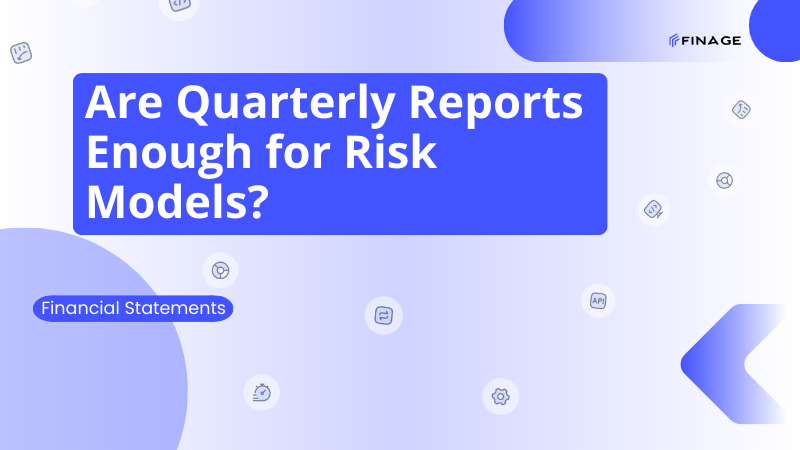Best Practices for Handling High-Volume Market Data in Your App
13 min read • June 21, 2025

Introduction
Building an application that works with market data is one thing. Building an application that reliably handles high-volume, low-latency financial data is another. Whether you're building a trading platform, analytics dashboard, or automated strategy, managing fast, heavy, and volatile data streams is a technical challenge that can easily overwhelm an unprepared system.
This isn’t just about speed. It’s about designing systems that stay consistent under load, scale with user demand, and process large amounts of real-time information without delays, bottlenecks, or data loss. And when you’re working with market data—where milliseconds matter—those challenges become even more critical.
In this article, we’ll walk through the key architectural and design principles for managing high-volume market data efficiently. We’ll cover stream management, data structuring, latency reduction, and infrastructure choices that help your application scale without sacrificing performance.
Table of Contents
- Understanding the Nature of High-Volume Market Data
- Choosing Between REST and WebSocket APIs
- Structuring Data for Fast Access and Processing
- Managing Burst Traffic and Volatility Surges
- Optimizing for Low Latency and Real-Time Updates
- Memory and Storage Considerations for Continuous Feeds
- Handling Symbol Mapping and Normalization at Scale
- Load Balancing, Caching, and Failover Strategies
- Monitoring Data Quality and Application Health
- Final Thoughts: Why Finage Supports Scalable Market Data Infrastructure
1. Understanding the Nature of High-Volume Market Data
Before optimizing how your application handles market data, you need to understand what makes this data so demanding. Market data isn’t just “big” — it’s fast, continuous, and often unpredictable. These characteristics put strain on your app’s performance, memory, and responsiveness if not managed correctly.
Real-time intensity
Financial markets generate a constant flow of updates—price changes, volume shifts, order book movements, and news events. Depending on the instruments and exchanges involved, your app could be processing hundreds to thousands of updates per second during peak hours.
Bursty behavior
Market data isn’t evenly distributed throughout the day. Sudden surges—like earnings releases, macroeconomic reports, or unexpected headlines—can multiply your data volume in seconds. Your system needs to be prepared to handle these bursts without falling behind or crashing.
Precision and ordering
Market data must be processed in order. Even a single out-of-sequence message can corrupt an indicator or trading signal. This requires precise timestamping, well-managed buffers, and stream integrity from the data source to the application layer.
High cardinality
If your application tracks dozens or hundreds of instruments (e.g., multi-asset portfolios or global feeds), the volume grows not just with time—but with breadth. Systems must handle parallel streams, per-symbol state tracking, and efficient data filtering.
2. Choosing Between REST and WebSocket APIs
When building an app that consumes financial data, your architecture starts with a core decision: pull or stream. REST APIs and WebSocket APIs each serve a purpose, but under high volume, choosing the right tool—or using both strategically—can significantly affect performance and user experience.
REST APIs: request-driven access
REST APIs are well-suited for:
- Periodic data snapshots (e.g., last closing price, 1-minute candles)
- Historical data queries for backtesting or reporting
- Scheduled analytics where real-time updates are not critical
They’re easy to implement and scale horizontally, but unsuitable for high-frequency data updates. Making repeated REST calls to monitor live changes across hundreds of instruments creates latency, rate-limit issues, and inefficient bandwidth use.
WebSocket APIs: event-driven streaming
For real-time trading apps, dashboards, or alert systems, WebSockets are essential. They:
- Push data instantly without constant polling
- Allow you to subscribe to specific instruments or data types (e.g., trades, quotes, depth)
- Offer lower latency and more consistent throughput
Finage WebSocket feeds, for instance, are optimized for real-time delivery across forex, equities, crypto, and more—supporting efficient, low-latency communication that scales with user demand.
Combining both
In many cases, a hybrid approach works best:
- Use REST APIs to initialize your view with historical or snapshot data
- Use WebSockets to subscribe to live updates and sync state continuously
- Use REST as a fallback when WebSocket connections drop or need reinitialization
This model offers both reliability and responsiveness without overloading your application or data provider.
3. Structuring Data for Fast Access and Processing
When market data arrives—especially in high volumes—how you store and process it has a direct impact on your app’s speed and stability. Proper data structuring ensures your system can read, transform, and respond to new updates efficiently, even during volatile periods.
Use flat, predictable formats
Financial data feeds typically come in structured formats like JSON. While flexible, deeply nested objects or inconsistent schemas slow down parsing and increase processing time. Normalize incoming data into flat, typed structures as early in the pipeline as possible.
This also simplifies downstream tasks like updating charts, triggering alerts, or feeding trading logic.
Index by time and symbol
The two most important dimensions in market data are timestamp and symbol. Design your internal data model around these keys:
- Store updates in a time-indexed format (e.g., ordered arrays, dictionaries)
- Group data by symbol to allow quick lookups and filtering
- Avoid mixing data types—keep trades, quotes, and candles separate unless intentionally merged
Well-indexed structures reduce the load when filtering recent updates or calculating indicators.
Pre-compute wherever possible
If your app runs rolling averages, change detectors, or volume filters, don’t recalculate the entire window with every new update. Instead, store running totals, rolling stats, or incremental states that update efficiently with each tick.
This speeds up UI rendering and reduces CPU usage during high-frequency periods.
Decouple raw data from UI logic
Don’t let your front-end logic depend directly on raw feed structures. Use a separate layer to clean, filter, and transform incoming data before it hits the UI or analytics layer. This makes your system more resilient and easier to update when data formats evolve.
4. Managing Burst Traffic and Volatility Surges
Market activity is not constant—it surges. Earnings releases, economic reports, geopolitical headlines, and flash crashes can all trigger sudden bursts in trading volume and price updates. During these events, your app must scale and stabilize without missing data or degrading performance.
Implement buffer queues
Introduce in-memory queues (e.g., ring buffers or message queues) between your data ingestion and processing layers. This prevents your system from getting overwhelmed when incoming data outpaces your ability to process it moment-by-moment.
These buffers smooth out volatility and allow for graceful degradation—slowing non-critical features while maintaining core updates.
Prioritize processing
When the feed gets heavy, not all data is equally important. Prioritize:
- Latest prices and trades for top-viewed instruments
- Alert conditions and active positions
- Visual or UX updates over logs or analytics
Consider implementing drop policies for non-essential data types (e.g., historical lookbacks or redundant ticks) during extreme load.
Rate limit your own functions
Even if your data provider handles traffic well, your own app logic might introduce load issues. Add internal throttling for UI updates, server notifications, and data writes. For example:
- Only refresh charts every 250ms
- Batch updates into time-sliced chunks
- Defer backend logging until the burst settles
These controls protect both the app’s performance and the user experience.
Monitor for backlog and lag
Use internal metrics to track:
- Data queue size
- Delay between arrival and processing
- UI update frequency
When lag indicators cross a threshold, trigger alerts or activate fallback strategies (e.g., switch from tick-by-tick to aggregated candles).
5. Optimizing for Low Latency and Real-Time Updates
In high-volume market applications, every millisecond counts. Whether you're serving traders, analysts, or automated strategies, latency isn't just a metric—it directly impacts user decisions and execution timing. Optimizing for low latency requires attention at every layer of your app.
Choose the closest data source endpoints
Start with your data provider. Use geographically appropriate endpoints to reduce transit latency. For example, if your users or systems are in Europe, connecting to a London-based Finage endpoint cuts time significantly compared to routing through New York.
Maintain persistent WebSocket connections
Rather than frequently reconnecting or polling, use a persistent WebSocket connection to maintain a constant flow of updates. Reconnect logic should include:
- Automatic reconnection with exponential backoff
- Re-subscription to previous instruments
- Graceful handling of stale or delayed messages
Persistent streaming ensures minimal delay between data generation and data delivery.
Use event-driven architecture
Event-driven design means your system reacts only when new data arrives—no polling, no constant checks. Pair WebSocket streams with event listeners that immediately push updates to the parts of your app that need them: the UI, alert engine, or trading logic.
This model is more responsive and uses fewer resources.
Minimize transformation time
Once data arrives, processing it quickly is essential. Keep data transformations lean and efficient:
- Avoid deep cloning or unnecessary parsing
- Cache frequently used calculations
- Run lightweight validations only on critical data paths
Use profiling tools to detect bottlenecks and refactor heavy operations in latency-sensitive components.
Monitor latency end-to-end
Set up metrics and logs to track:
- Time from market event to receipt in your app
- Time from receipt to UI update or action
- Any queuing or buffering delays
This gives you visibility into your performance and helps isolate latency sources when issues arise.
6. Memory and Storage Considerations for Continuous Feeds
Real-time market data is relentless. Unlike static datasets, it doesn’t stop accumulating. If your app keeps every tick, every quote, or every order book change in memory or on disk, things can spiral quickly. That’s why memory and storage management are critical to long-term performance and stability.
Store only what you need
Not every data point is worth saving. Identify what’s necessary for:
- Immediate display (e.g., current price, last 10 trades)
- Short-term analysis (e.g., 1-minute OHLC over the past hour)
- Long-term strategy tracking (e.g., end-of-day candles, performance logs)
Discard or downsample the rest. For example, reduce high-frequency trade data to rolling summaries or time-windowed aggregates.
Use time-based data pruning
Set up rolling buffers in memory, indexed by time. For example:
- Keep only the last 1,000 ticks per symbol
- Store 5-minute snapshots for 1 day
- Remove any data older than 24 hours from RAM, if it’s archived elsewhere
This prevents memory leaks and ensures consistent performance over time.
Compress and archive long-term data
If you need to retain historical data for analysis or audits, store it in a compressed format (e.g., Parquet, zipped CSV) and move it to cold storage. Use scheduled jobs to:
- Offload from memory or active disk
- Upload to object storage (e.g., S3, Google Cloud Storage)
- Index by symbol and date for future queries
This balances storage cost with access flexibility.
Use lightweight in-memory databases or stores
In-memory stores like Redis or TimeScaleDB can offer fast access to recent data while offloading raw storage logic from your core application. This setup allows you to query and update frequently without clogging up your application memory.
7. Handling Symbol Mapping and Normalization at Scale
When your app tracks dozens—or even hundreds—of financial instruments, consistency becomes a real challenge. Different data sources, asset classes, and exchanges may use different naming conventions, time zones, or metadata formats. If left unmanaged, this causes errors in charting, alerting, or even execution logic.
Use a centralized symbol registry
Create and maintain a master list of all instruments you track. For each, store:
- Normalized symbol name
- Exchange or venue
- Asset class (e.g., equity, crypto, forex)
- Time zone and trading hours
- Any required aliases or feed-specific IDs
This registry should act as the single source of truth for symbol handling across your app.
Normalize incoming feed data
Different providers might send symbols like AAPL, US:AAPL, Your system should normalize all incoming data into a unified format on arrival—before it reaches business logic or user interfaces.
This prevents duplication, mismatched updates, or confusion in analytics.
Handle delistings and symbol changes
Instruments change over time. Companies merge, tickers change, and new assets get introduced regularly. Your system should include:
- Symbol aliasing support
- Detection and notification of delisted instruments
- Scheduled updates to the symbol registry
Finage provides stable, exchange-normalized symbol formats to simplify this layer—especially when managing large portfolios or multi-feed apps.
Localize but unify
If you're dealing with global data (U.S. equities, European ETFs, Asian forex pairs), consider how local time zones and trading calendars affect data flow. Normalize timestamps to UTC internally, while displaying local time to users where needed.
8. Load Balancing, Caching, and Failover Strategies
As your app grows to handle more users, symbols, and updates, stability becomes as important as speed. Spikes in traffic or infrastructure hiccups shouldn’t take your system down—or even noticeably slow it. That’s where load balancing, caching, and failover come in.
Load balancing for WebSocket connections
For real-time data feeds, distribute WebSocket connections across multiple nodes or containers. This prevents one server from becoming a bottleneck, especially when:
- Users subscribe to many symbols simultaneously
- Data volume spikes during major news events
- Your application spans geographies or time zones
Keep-alive mechanisms and reconnection logic should be built in to allow users to seamlessly reconnect if a node goes offline.
Use smart caching for REST endpoints
REST-based historical or snapshot data is often repeat-accessed. Use in-memory or edge-level caching to:
- Avoid re-fetching recent OHLC or last trade values
- Serve data faster to multiple users requesting the same asset
- Reduce load on your primary data provider or backend
TTL (time to live) strategies ensure caches stay current without needing constant refresh.
Build fallback layers for resilience
No matter how reliable your provider is, temporary network issues, rate limits, or service hiccups are inevitable. Protect your app by:
- Storing the last known value for each key symbol
- Using conditional logic to fill temporary gaps in the feed
- Falling back to REST queries or backup feeds if WebSocket disconnects
These layers let your app degrade gracefully—keeping the user informed and the UI stable, even when real-time data stutters.
Monitor system health actively
Track system load, feed activity, queue sizes, and connection status in real time. Alert thresholds help you respond to:
- Latency creeping above target
- Dropped subscriptions or message gaps
- User devices overloading due to unfiltered data
Proactive monitoring turns issues into controlled events—not user-facing emergencies.
9. Monitoring Data Quality and Application Health
Handling high-volume data isn’t just about throughput. It’s also about trust. Traders, analysts, and automated systems depend on the accuracy, timeliness, and reliability of your data. That means your application needs to monitor itself—and the data it handles—continuously.
Track data freshness
Your app should constantly validate whether it’s receiving live data. For each symbol or feed:
- Check the timestamp of the most recent update
- Flag delays beyond a certain threshold (e.g., 2 seconds for WebSockets)
- Alert when streams go quiet unexpectedly
This ensures your interface stays synced and users aren’t making decisions based on stale information.
Validate feed integrity
Implement lightweight logic to detect anomalies like:
- Sudden price jumps with no corresponding volume
- Duplicate ticks
- Missing fields or null values
- Out-of-order timestamps
These checks help you identify feed issues—whether caused by infrastructure, data providers, or network latency—before users are affected.
Monitor system performance metrics
Track internal health in real time:
- Memory usage (especially for long-running WebSocket sessions)
- Queue sizes and backpressure
- CPU load on ingestion and transformation modules
- API call counts and rate-limit status
This makes it easier to identify performance bottlenecks and scale proactively.
Log events that affect user trust
Beyond technical metrics, also log and monitor:
- Feed reconnections or subscription drops
- Failed data parsing attempts
- Latency spikes during known volatility events
These logs are invaluable for debugging, post-mortems, and demonstrating reliability to stakeholders.
10. Final Thoughts: Why Finage Supports Scalable Market Data Infrastructure
Managing high-volume market data is one of the toughest technical challenges in modern finance. It requires a system that’s fast, resilient, and smart—capable of absorbing unpredictable flow, handling bursty volatility, and scaling without compromising accuracy.
From real-time streaming with WebSockets to high-quality historical data via REST, Finage was built with this level of pressure in mind. Our infrastructure is designed to support:
- Consistent, low-latency data delivery across asset classes
- Normalized symbols and clean APIs to reduce friction
- Scalable endpoints for both startups and large-scale apps
- Global coverage with regionally optimized access points
Whether you're building a live dashboard, an automated trading bot, or a portfolio analytics engine, Finage provides the reliable foundation to handle market data without compromise.
You can get your Real-Time and Historical Stocks Data with a Stock Data API key.
Build with us today!
Claim Your Free API Key Today
Access stock, forex and crypto market data with a free API key—no credit card required.

Stay Informed, Stay Ahead
Finage Blog: Data-Driven Insights & Ideas
Discover company news, announcements, updates, guides and more


